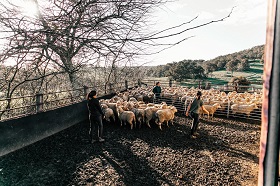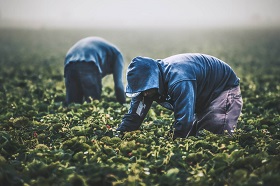Your property, your rules. So how do others know what the rules are? Sure, you can go through this with every person setting foot on your farm. Or you could set up some policies and procedures and maybe an induction or two, to make life a lot easier both now and in the future. This is also a simple way to let others know what you expect from them.
We’d all like to think that safety is common sense.
If that was true, then we’d think the same and no one should ever get hurt. Unfortunately, we know that isn’t the case – in fact in agriculture we know it’s the exact opposite. With the highest fatality rate compared to any other industry, something must change.
We can agree that safety in agriculture is probably one of the least favourite things we have to do. It doesn’t make money and the paperwork can be a real pain, right?
This is where we need to make a shift in thinking and start changing the culture. Getting this right starts at the top. The person or people in charge of an agribusiness set the tone for the safety culture. If that’s you, what message are you sending your team?
If you see safety as a hassle and something you ‘do’ on top of the usual work, then your people see it the same and it becomes gruelling. If you make a small change to see safety as just the way things are done day to day, then your team will follow.
Instead of safety being an addition, think of working safely instead. Incorporate safety in everything you do and suddenly, it’s not that hard. And when we work safely, we tend to avoid serious incidents that cost time and money, whether that’s a broken piece of machinery or a broken worker. The change of approach means you need to put a few things in place to support it.

Let’s have a look at what you really need.
1. Decide if common sense is a valid system in your workplace
There’s lots of different opinions and ideas out there, many of which are aimed at different yet equally as risky work such as mining, transport, and construction.
There are some similarities in these industries as they are generally physical work with some high-risk tasks – sound familiar? Yet these industries have managed to make some great improvements to safety and significantly reduce injury and fatalities.
They realised common sense wasn’t enough, plus they had safety regulators watching everything they did. By working together as an industry, they managed to implement good safety management systems with policies, procedures, inductions, training, and a few other things. There’s no reason agriculture can’t achieve similar results. There’s no reason YOU can’t achieve similar results in your agribusiness.
2. Start with your overarching policy first
Health and safety policies are the best place to start, because they tell people in your business and others what you expect.
Every business needs a Work Health and Safety Policy as a start. It should be relevant to your business, taking in to account the nature and scale of your risks.
What it needs to include:
- The commitment to set up measurable objectives and targets for continued improvement in safety, aimed to eliminate work-related injury.
- It should include a commitment to comply with health and safety laws, be written down and communicated to workers and others.
- And like anything, it needs to be reviewed from time to time so it’s still relevant and appropriate to your business.
Now consider some of your risky activities
- Operating and working around farming machinery is high risk. Using chemicals is high risk. Working with livestock is high risk.
- What policies do you have around these? Are you clear about who can do what, and how things are done? If not, maybe create these policies next.
- Next, think about what else poses a risk to people on your farm and work through policies around those.
- It might be ensuring your workforce is fit for work and not under the influence of drugs or alcohol.
What about your Procedures?
Procedures are useful to get a consistent approach to a task or process. These are particularly helpful if you’ve got new farm workers coming in, but also for people that have been with you for a while.
Sometimes we take for granted that we know how to do something, and that’s when things can go wrong.
Complacency is one of the biggest risks we face in any workplace, not just in agriculture.
That old ‘I’ve been doing it like this for years and nothing’s gone wrong’ mentality can be the reason things DO go wrong. Things change. Processes change. Machinery gets older. Workers get older. Sometimes the stars don’t align and someone ends up with a serious injury.
Having procedures for some of the more high-risk jobs are a good reminder to everyone on how to stay safe. And should the need arise, you can then use these documents in a HR setting to manage a situation of someone not doing the right thing.
Tell everyone about it
Part of your obligation is to provide information, training, instruction, or supervision to your workers. When you create a health and safety policy or procedure, make sure you let your workforce know about it.
There’s no point in having any kind of document like this and not sharing it. It’s pretty simple to do – if you have any meetings, make sure it’s discussed then, and notes taken of who was there. Get copies out to workers. Have copies of relevant procedures available with machinery and equipment so it’s always available.

When someone new starts with you, make reading these documents part of their induction and onboarding. Get them to sign off on having read and understood them. Then, make sure the procedures are implemented by keeping an eye on things.
By having policies and procedures, you’re better placed to prove that you’re doing what’s ‘reasonably practicable’ to ensure the health and safety of people on your farm – an important thing which might just save the farm (literally) when a safety regulator comes in to investigate an incident.
Acknowledgement
This article is courtesy of Safe Ag Systems


